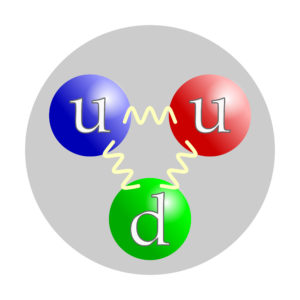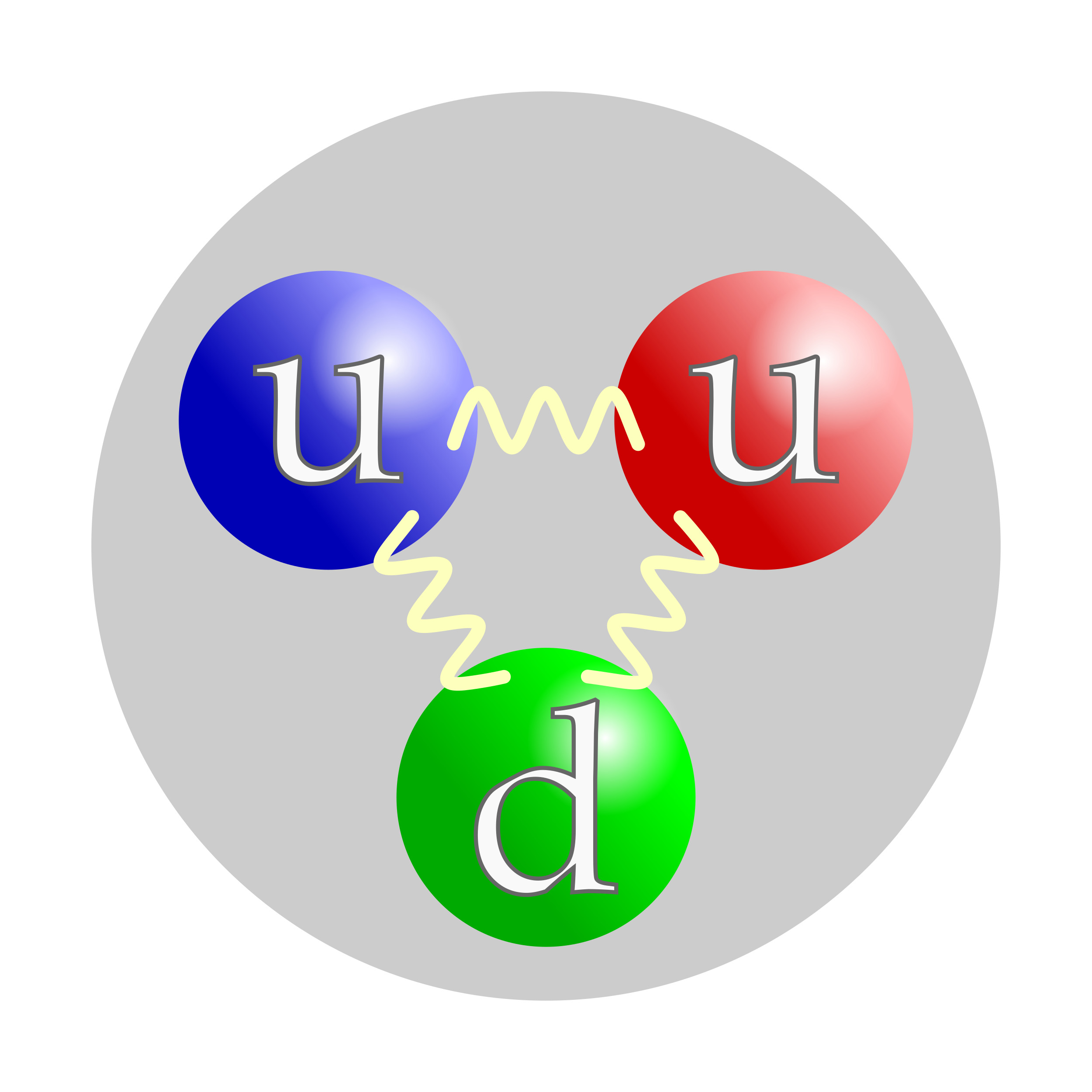
What is a gluon? It is a massless subatomic particle that carries the force that binds quarks together, known as the strong force.
There are four forces that affect everything in the universe. These are gravity, the electromagnetic force, the weak force, and the strong force. They are known as the four fundamental forces. Gravity is the weakest of the four forces. You can test this by picking your pen up off your desk. Gravity is so weak that you, a mere human, can overcome the gravity of a planet. The weak force is next. It works on a subatomic level, but it only has power over short distances. The electromagnetic force is next and it acts between all charged particles. And the strongest is the strong force, which holds particles together.
Everything in our universe is made up of atoms that join with other atoms to make molecules. However, the atom is not the smallest thing in the universe. Atoms are made up of even smaller particles. There are two kinds of particles in our universe and everything is made up of those two kinds of particles. There are particles that carry matter, called fermions, and particles that carry force, called bosons. These particles are elementary particles, which means there is nothing smaller, that we know of at the current time. One day, fermions and bosons might turn out to be made of something even smaller, but, for now, they are the smallest thing.
Fermions are further divided into two groups: leptons and quarks. There are six types of leptons. They are electrons, muons, tau particles, electron neutrinos, muon neutrinos, and tau neutrinos. Electrons orbit around atoms, muons and tau particles are created in violent particle collisions. Neutrinos are created when atomic nuclei come together, such as during nuclear fusion inside our sun. Leptons are only acted on by three of the fundamental forces: gravity, the weak force, and the electromagnetic force. The strong force doesn’t act upon them, which means that are free to move around individually. Electrons can jump to other atoms and neutrinos can fly through space.
The other type of fermions are quarks. They go together to make the protons and neutrons that form the nucleus of atoms. Quarks have to group together to make up atoms and they need something to stop them flying off into space and that is the strong force. The strong force doesn’t affect leptons, but it does affect quarks. And this is where the second type of particles, bosons, come in.
Bosons are the particles that carry force. There is a different type of boson for each force. Gravity is carried by the graviton. This boson is only theorized because it hasn’t yet been discovered. The weak force is carried by three bosons: W+, W-, and Z0. The electromagnetic force is carried by the photon. And the strong nuclear force is carried by the gluon.
So, gluons are the boson particles that carry the force that holds quarks together. The quarks in the protons and the neutrons are constantly trying to push themselves apart because of the electromagnetic force, but they are kept together by the strong force, which is 100 times stronger than the electromagnetic force. If we didn’t have gluons, quarks wouldn’t stay together and we wouldn’t be able to have protons and neutrons, which means we wouldn’t have atoms, which means we wouldn’t have anything. The fact that they stick quarks together is why they are called gluons. Murray Gell-Mann, the American physicist who introduced the idea of quarks, named them in 1969 and he simply used “glue” and “on”.
How do gluons hold the quarks together? Gluons are massless, and they fly between the quarks at almost the speed of light, billions of times a second. The gluons become very dense, almost like a string, and they bind the quarks together with energy. Quarks and gluons are always together. You do not find one without the other. They can be pulled apart, if enough energy is added to the quarks, but they don’t separate. As you add more energy, the string of gluons between them stretches. You have to add more energy to keep stretching it and as you add more energy, the energy turns into more quarks. There is no way to see gluons but they have been detected through experiments. And this is what I learned today.
Image By Arpad Horvath – Own work, CC BY-SA 2.5, https://commons.wikimedia.org/w/index.php?curid=637353
Sources
https://en.wikipedia.org/wiki/Gluon
https://home.cern/news/news/physics/four-decades-gluons
https://en.wikipedia.org/wiki/Murray_Gell-Mann
https://fafnir.phyast.pitt.edu/particles/color.html
https://www.energy.gov/science/doe-explainsquarks-and-gluons
https://www.fnal.gov/pub/today/archive/archive_2013/today13-04-12.html
https://en.wikipedia.org/wiki/Strong_interaction

